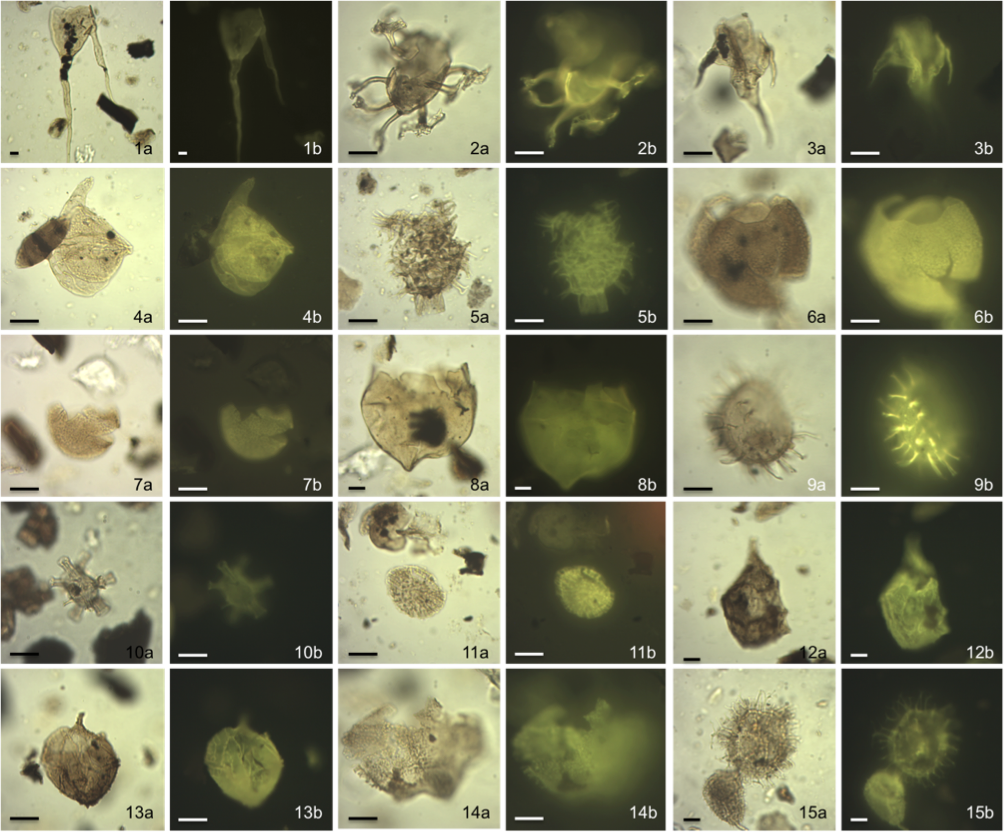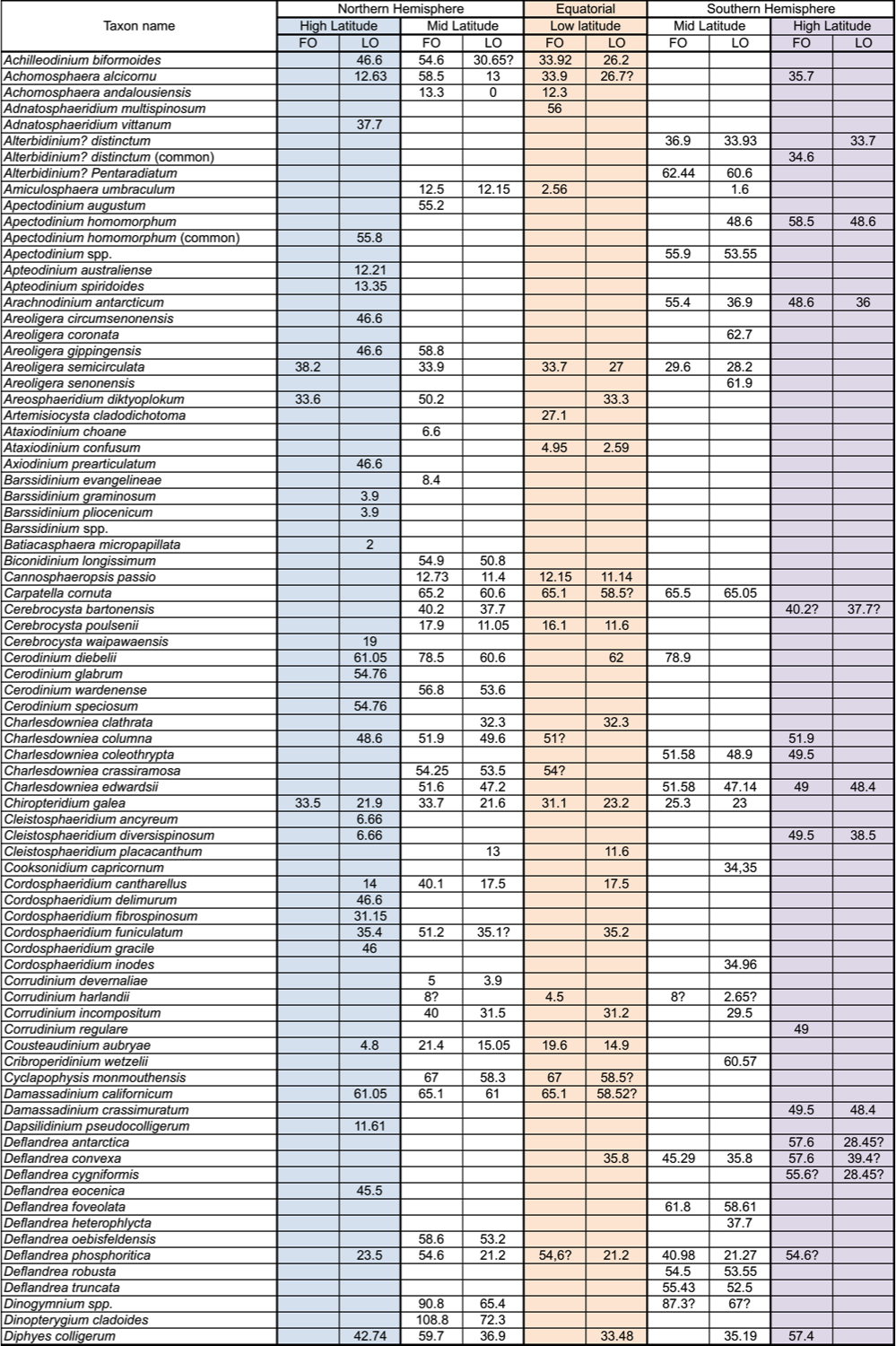DINOFLAGELLATE CYST BIOSTRATIGRAPHY
Quantitatives (counting up to 300 specimens per sample) or semi-quantitatives analyses.
From Mesozoic to Present, everywhere in the world.
High-quality biostratigraphic and paleoenvironments interpretations.
Interpretation of recorded species is based on the global and/or regional biostratigraphic charts.
CASE STUDY
Australia, (Carpentaria Basin) – Cretaceous
Dinoflagellate cyst species identified in one sample from Carpentaria Basin (Australia).

1. Odontichitina operculata, 2. Stiphrosphaeridium anthophorum, 3. Muderongia sp., 4. Dingodinoum cerviculum, 5. Coronifera oceanica, 6. Canningia grandis, 7.Cassiculosphaeridia magna, 8. Circuloideum coliveri, 9. Kiokansium polipes, 10. Discorsia nanna, 11. Chlamidophorella nyei, 12. Cribroperidinium muderogense, 13. Cribroperidinium sp., 14. Cyclonephelium sp. , 15. Spiniferites sp.
Photographs are in light and fluorescence microscopy. The scale bar represents 20 microns
ESTIMATED AGE : CRETACEOUS – middle Aptian
based on the presence of O. operculata (FO during Albian) and D. cerviculum (LO within the O. operculata Zone – Aptian).
BIOSTRATGRAPHY CHART
Selected Dinoflagellate cysts, Neogene
Selected Neogene dinoflagellate cysts species
Biostratigraphic records are based on scientific publications (Geobiostratdata – database).
